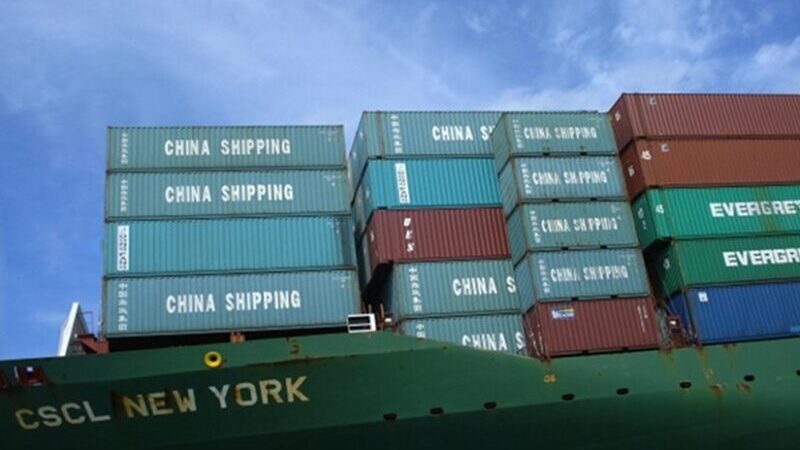Excess Capacity: The Latest US’ Strategic Narrative To Counter China – OpEd

The US-China trade war is set to escalate with the announcement by the Biden administration that it will quadruple tariffs on electric vehicles, double tariffs on solar panels, and nearly triple tariffs on Chinese-made steel and aluminum products. Such an approach was expected following visits of Treasury Secretary Janet Yellen and Secretary of State Antony Blinken to China, considering the stances they had taken.
Yellen criticized her Chinese counterparts for ignoring what she termed China’s industrial overcapacity, calling it a threat not only to American manufacturers but also to the global economy. According to her, this excess capacity is the result of a highly protectionist policy and the allocation of massive financial aid by the Chinese government to its manufacturers over the past decades. This has given Chinese entrepreneurs, especially in the green industry and clean energy sectors, an unfair competitive advantage, enabling them to sideline other competitors in global markets.
The threat posed by China’s industrial overcapacity was raised again at the end of Blinken’s three-day visit to China. He likened China’s economic policies, which have led to product inflation and flooding of Chinese products into global markets, to a repetitive movie with a predictable ending for the American audience. The tragic end of this movie will be the closure of factories and the loss of jobs with all their social and political ramifications. Along with Yellen, Blinken emphasized that all options would be on the table to prevent repetition of this dramatic ending.
According to the International Energy Agency based in Paris, after a decade of subsidizing its automotive industry, China now monopolizes about 60% of the global market for electric vehicles with its robust automotive manufacturing sector. Based on some estimates, Chinese companies produce an average of 10 million more electric vehicles annually than their domestic sales demand, leading to the surplus cars being sold in the international markets. There is concern that a similar mechanism governing other sectors of China’s technology and green industry, such as solar panel and battery production, will drive the Chinese to capture even more international markets.
Although American officials claim they have seen this scenario before, there is evidence that they view the current trade challenge as different from previous instances. Imports of steel and aluminum from China have increased significantly over the past decade, following the Chinese government’s support for production expansion after the global financial crisis in 2008. The import of these products in 2017 coincided with the Trump administration imposing tariffs, which have remained in place under the Biden administration. What seems newer compared to previous experiences, according to some analysts, is the growing concern over China’s excess capacity in certain high-tech sectors, which is becoming increasingly acute.
However, the Chinese side assesses that the real goal of the United States in claiming China’s excess capacity is simply to suppress the development of China’s emerging industries and to maintain the long-standing but declining monopoly position of the United States in the global industrial chain. According to them, the idea of excess capacity lacks any basis when global demand is projected to increase significantly by 2030, with estimates from the International Energy Agency indicating a surge to 45 million electric vehicles—a 4.5-fold increase—and 820 gigawatts of photovoltaic energy production—a fourfold increase. This is especially pertinent as growth in these nascent sectors still significantly lags behind desired levels.
U.S. officials and media attribute the bankruptcy of American companies to the influx of cheap Chinese products. However, Chinese electric vehicles have now been excluded from the U.S. market thanks to tariffs. Therefore, the high price of American electric vehicles, with an average price of about $50,000, has hindered their widespread adoption in the United States, not China’s excess capacity. In 2023, electric vehicles made up only 7.6% of the total U.S. car market.
Additionally, the United States has faced significant resistance in building its own electric vehicle manufacturing infrastructure, which fundamentally has nothing to do with China or its excess capacity. In the United States, Republicans and fossil fuel companies have historically opposed the development of electric vehicles. The United Auto Workers, who are key supporters of the Democratic Party and advocates for Biden’s reelection, have serious concerns and reservations about shifting the production system towards electric vehicles.
According to Chinese officials, criticisms from the United States regarding China’s excess capacity are not based on market logic but rather fabricated narratives aimed at manipulating and politicizing trade to disrupt China’s economic development process. In fact, there is no excess capacity. What exists is America’s fear and concern about losing its position in the global economy in the face of China’s growing economic prowess. However, behind this seemingly new trade dispute, a deeper hidden reality has emerged.
The term “excess capacity” has recently emerged as a pivotal concept in the West’s discourse. It serves as a strategic tool aimed at managing and balancing China’s burgeoning influence while safeguarding the existing power dynamics in the international arena. Alongside other terms like “isolation,” “de-risking,” and “NATO,” it shares a common origin—rooted in the intersection of political-security and commercial-economic considerations. By framing economic and commercial issues through a security lens, a grand narrative has been constructed—one that portrays China as both a rival and a threat to the established world order. In this era of renewed geopolitical competition among major powers, the Biden administration seeks to comprehensively contain China. Their objective extends beyond mere containment; it also involves restoring stability to the waning liberal international order.
